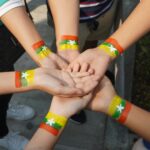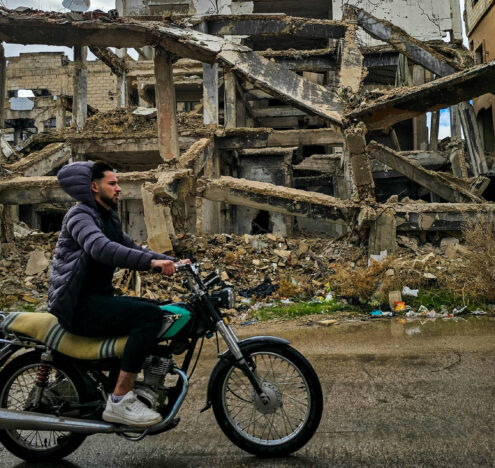Russia’s invasion of Ukraine in 2022 led to the mass mobilization of Ukrainian men to fight on the frontlines. It also led to a dramatic increase in the participation of women in the armed forces, including in combat roles, doubling their numbers from 33,000 before the war to 60,000 — and counting. This is consistent with past trends: Men are targeted for the draft and cannot leave the country under martial law. At the same time, professional barriers to women’s military service are removed in situations of existential threat.
President Vladimir Putin is not only attempting to redraw international boundaries by force, but he is also normalizing rape and other forms of conflict-related sexual violence as tools of war. Russia’s blatant disregard for international rules, norms, and conventions poses a challenge for NATO. As the alliance continues to support Ukraine in its efforts to defeat Russia, it also needs to figure out how to transcend from its traditional focus on conventional and nuclear capabilities to collective defense and deterrence that considers societal resilience, which relies on the participation of women.
From Resilience and Deterrence to Gender
If the global pandemic made the focus on resilience obvious, understood as “the capacity of societies to prepare for, respond to, recover from and adapt to the full range of threats and hazards,” there are also clear implications for deterrence and defense. This realization was reinforced in the 2022 NATO Strategic Concept, the alliance’s capstone document for outlining its priorities. The Strategic Concept also identified that Women, Peace, and Security is a cross-cutting issue, signaling that national, collective, and whole-of-society resilience requires women to be equal partners in defining what security means and how it can best be achieved. Most member states, and indeed NATO as an organization, have long endorsed this view by adopting National Action Plans on Women, Peace and Security and through the NATO/EAPC Women, Peace and Security Policy and Action Plan.
As Russia’s war on Ukraine continues, upholding the norms that underpin the Women, Peace, and Security agenda has become even more primordial.
In “Deploying Feminism: The Role of Gender in NATO Military Operations,” I chronicle NATO’s journey from the first iteration of its Women, Peace and Security policy in 2007 to the routine, day-to-day work performed by Gender Advisors and Gender Focal Points who provide advice to commanders on how gender considerations are relevant in their operating environment. While NATO has reaffirmed that Women, Peace and Security is integral to its three core tasks (deterrence and defense; crisis prevention and management; and cooperative security), some elements are missing. For example, Women, Peace and Security items have been integrated into NATO’s crisis management and cooperative security, but the implications of gender for collective defense and deterrence have not been as well articulated.
NATO’s experience in Afghanistan, for example, underscored the importance of understanding the operating environment through a gendered lens, as previous assessments had been biased by the absence of engagement with Afghan women. In Kosovo, NATO’s Liaison and Monitoring Teams have consulted with women’s organizations to better understand the risks of violence across the communities they patrol. Those early experiences with the deployment of gender advisors, all-female teams or mixed units led to a more accurate understanding of the differentiated impacts of conflict on the population — and ultimately shaped NATO’s narratives on Women, Peace and Security that are now embedded in high-level speeches and in training materials.
The NATO Secretary General Jens Stoltenberg penned an op-ed with Angelina Jolie, titled “Why Women Must Defend Women’s Rights,” arguing that “stronger awareness of the role that gender plays in conflict improves military operational effectiveness and leads to improved security.” This awareness is undoubtedly important, from counterinsurgency operations to major deterrence challenges like the one NATO is facing today.
Gender Equality is Key for Security
As Russia’s war on Ukraine continues, upholding the norms that underpin the Women, Peace, and Security agenda has become even more primordial. This is not simply because Russia threatens them, but because the connection between gender equality and sustainable security outcomes continues to grow stronger. As the work of Valerie M. Hudson and others has made clear, there are significant links between the security of women and the security of states. Just as Russia’s masculine and patriarchal model undermines security at home and abroad, so too does it cause disorder elsewhere and for everyone. According to Hudson and others, “the general subjugation of women also means men have to live in societies that, generally speaking, are violent, dysfunctional, insecure, unstable, and poor.”
As NATO continues to address the most pressing threats and challenges in the transatlantic area and beyond, it would do well not to lose sight of these lessons learned across its missions and operations and to recognize that since 2007, it has created policies and military directives tied to Women, Peace, and Security that can support it in precisely those efforts.




















